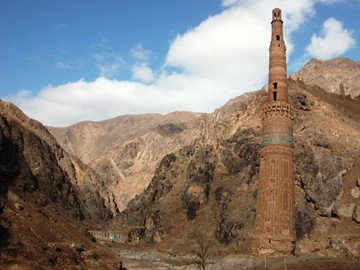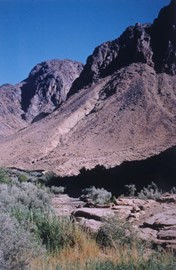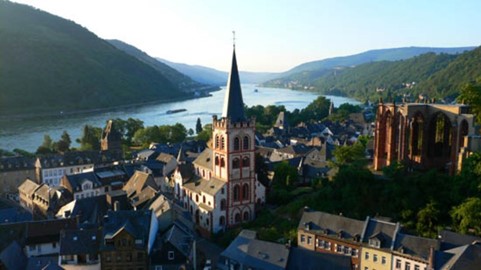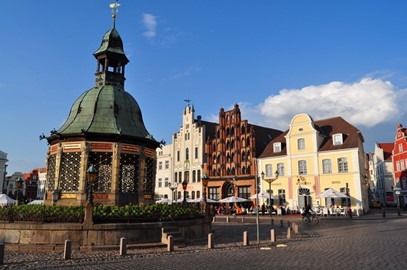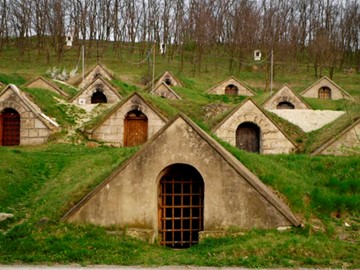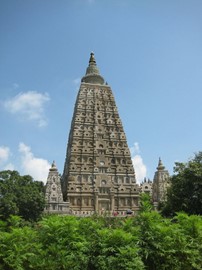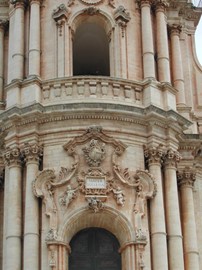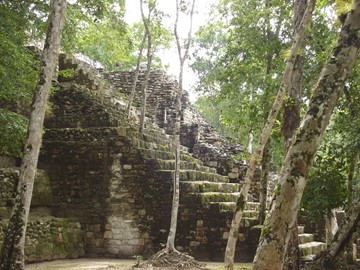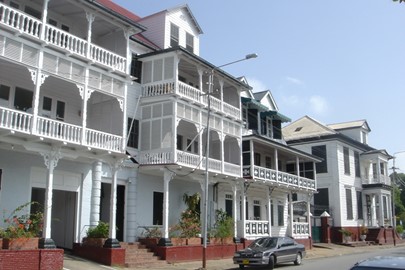year :: 2002
Minaret of Jam
The Minaret of Jam, a UNESCO World Heritage site in Afghanistan, recognized in 2002 and listed as World Heritage in Danger, is a 12th-century brick tower standing 65 meters tall, built by the Ghurid Dynasty in a remote river valley. Adorned with intricate stucco and tile work, it reflects Islamic architectural brilliance and marks a once-thriving medieval city now lost to time. This isolated monument showcases Afghanistan’s cultural heritage, enduring despite erosion and conflict threats.
Saint Catherine Area
The Saint Catherine Area, a UNESCO World Heritage site in Egypt, is a sacred desert landscape centered around the 6th-century Saint Catherine’s Monastery. Nestled beneath rugged mountains, it features ancient manuscripts and a chapel atop Mount Sinai, tied to biblical history. This site blends spiritual significance with natural grandeur.
Upper Middle Rhine Valley
The Upper Middle Rhine Valley, a UNESCO World Heritage site in Germany, is a picturesque stretch of river landscape famed for its dramatic beauty and historical significance. Steep vineyard-covered slopes rise above the Rhine, dotted with medieval castles and charming villages. This romantic valley has inspired poets, artists, and composers for centuries. Its strategic location shaped trade and culture in Central Europe. The site blends natural splendor with a rich tapestry of human heritage. It stands as a... Read More
Stralsund and Wismar
Stralsund and Wismar, a UNESCO World Heritage site in Germany, are medieval Hanseatic towns renowned for their well-preserved Gothic brick architecture. Featuring grand churches, gabled houses, and historic marketplaces, they reflect the prosperity of the Hanseatic League’s trading network. These coastal settlements showcase a blend of maritime heritage and urban planning from the 13th and 14th centuries. Their robust fortifications and warehouses highlight their strategic importance in Northern Europe. Thi... Read More
Tokaj Wine Region
The Tokaj Wine Region is celebrated for its centuries-old tradition of crafting exquisite wines, particularly the renowned Tokaji Aszú, a sweet dessert wine revered as the 'king of wines.' This UNESCO World Heritage Site highlights a harmonious blend of cultural heritage, natural landscape, and viticultural innovation, showcasing the art and history of winemaking.
Mahabodhi Temple
The Mahabodhi Temple Complex, a UNESCO World Heritage site in India, is an ancient Buddhist temple renowned for its historical and spiritual significance. Built around the 3rd century BCE and later expanded, it marks the location where Gautama Buddha attained enlightenment under the Bodhi Tree. The complex features a striking 55-meter-high pyramid-shaped tower, intricate carvings, and serene courtyards, reflecting a blend of architectural styles from different periods. It remains a vital pilgrimage destinat... Read More
Val di Noto
Val di Noto, a UNESCO World Heritage site in Italy, is renowned for its exquisite late Baroque architecture across eight towns rebuilt after a devastating 1693 earthquake. This cohesive ensemble features ornate churches, palaces, and urban layouts, exemplifying 18th-century Sicilian artistry and resilience. Its harmonious design and historical significance make it a standout cultural treasure.
Calakmul
Calakmul, a UNESCO World Heritage site in Mexico, is an ancient Maya city hidden deep within the jungle, renowned for its impressive pyramids, stelae, and intricate carvings that offer a glimpse into Maya civilization at its peak. Flourishing between the 6th and 8th centuries, it was a major political and cultural center, rivaling Tikal in power and influence. The site features over 6,000 structures, including one of the tallest pyramids in the Maya world, and is surrounded by a vast biosphere reserve teemi... Read More
Paramaribo
Paramaribo, the capital of Suriname, is a UNESCO World Heritage site renowned for its well-preserved colonial architecture, reflecting a unique blend of Dutch, British, and French influences from the 17th and 18th centuries. The city’s historic inner center features wooden buildings, including the iconic Saint Peter and Paul Cathedral, showcasing intricate craftsmanship. Its cultural significance stems from its role as a trading hub in the Caribbean, with a diverse heritage shaped by indigenous, African, an... Read More
